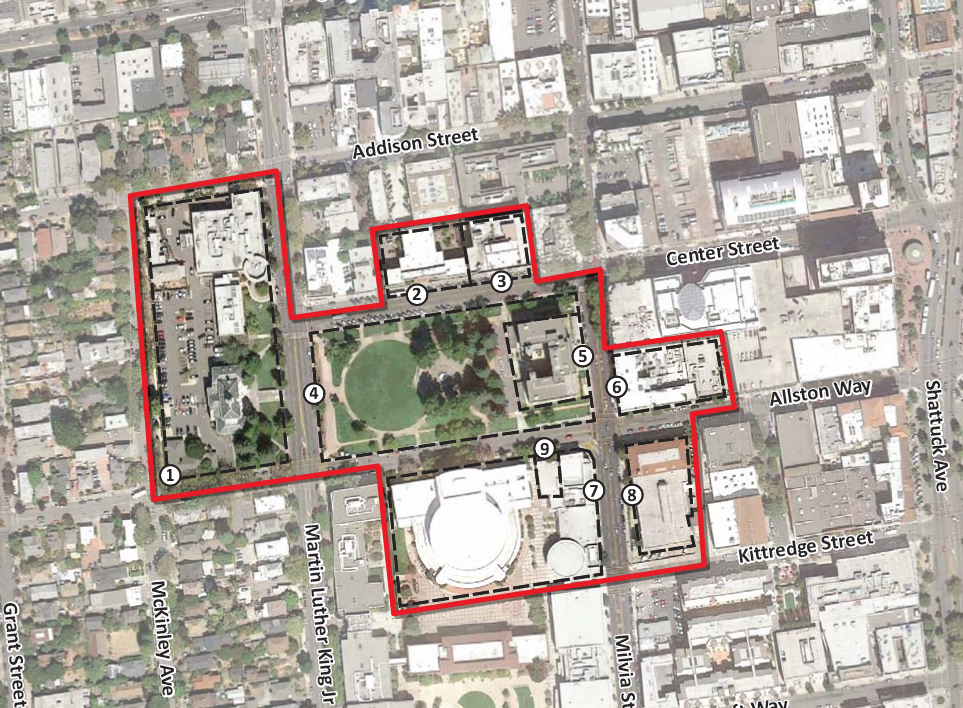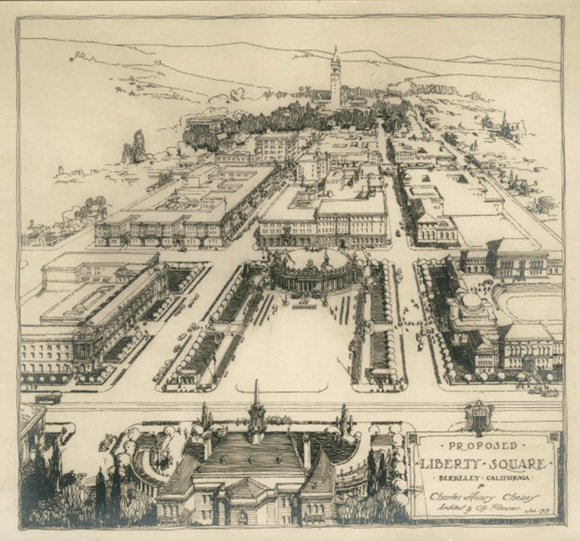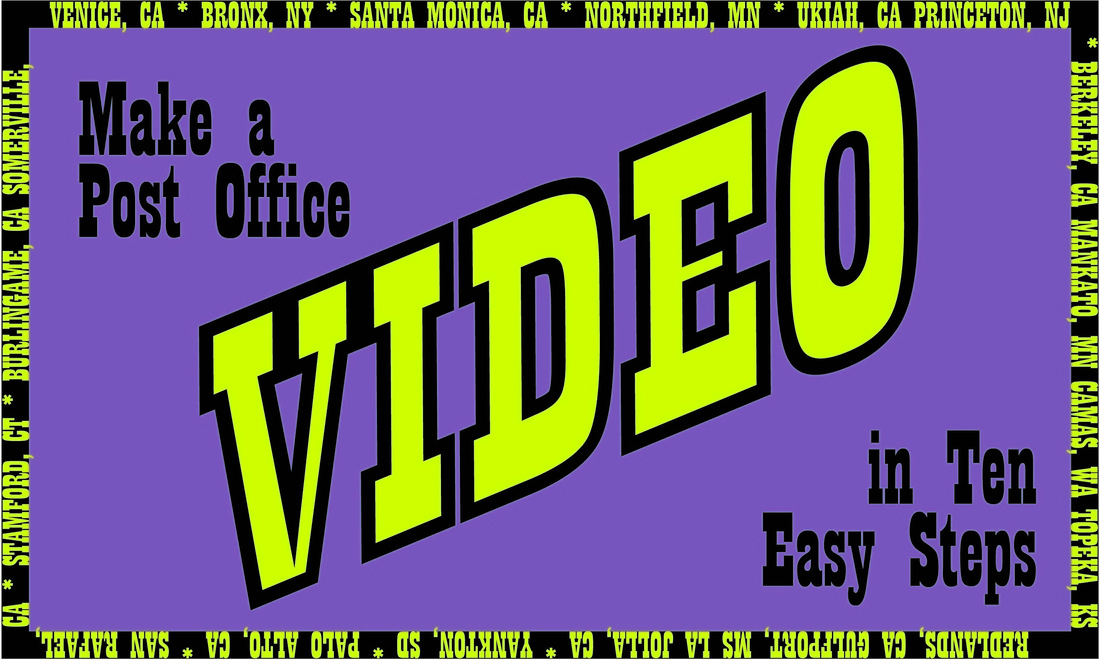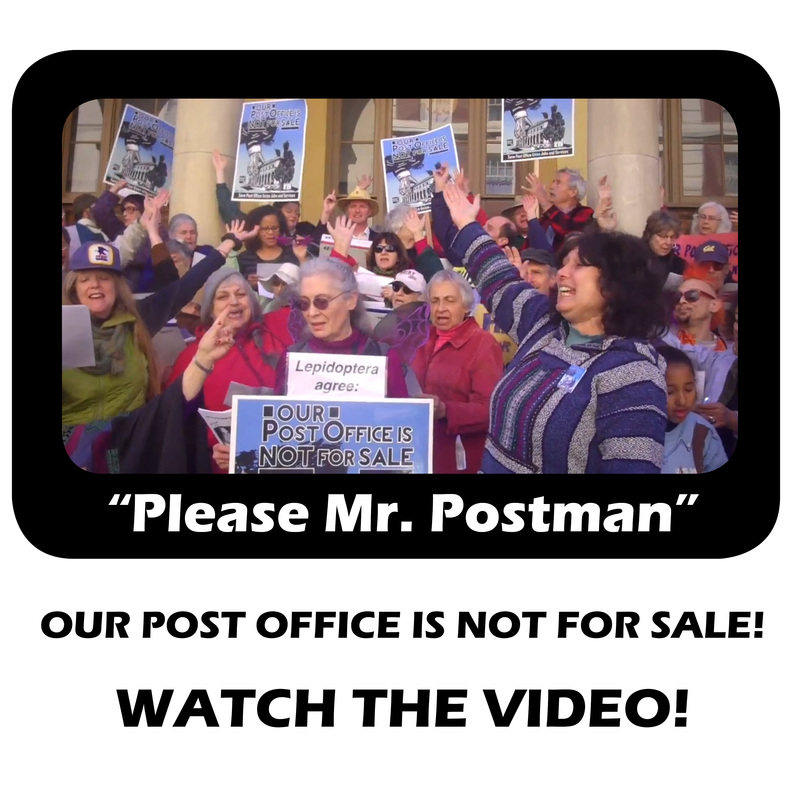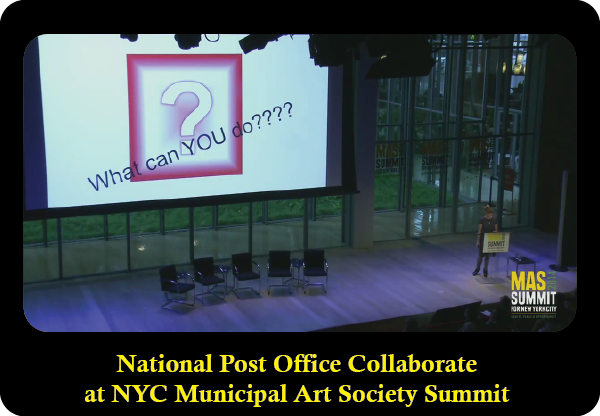8 a.m. on Thursday, January 11, 2018, arguments will be heard before Judge William Alsup, Courtroom 12, 19th floor, 450 Golden Gate Avenue
The City of Berkeley and the United States Department of Justice (DOJ), acting on behalf of the U.S. Postal Service, will be in Federal Court on Thursday January 11, 2018. This hearing is the result of a suit filed by the DOJ against Berkeley on August 22, 2016. The DOJ suit alleges that Berkeley’s Civic Center Historic District Zoning Overlay is not permitted under the United States Constitution.
Some background: In 1998 the City of Berkeley designated our Civic Center as an historic district and the same year Berkeley’s Civic Center Historic District was entered on the National Register of Historic Places.
In September of 2014, responding to community demand, including numerous public hearings and a ballot initiative, the Berkeley City Council passed the Civic Center Historic District Zoning Overlay. The Overlay protects and preserves our Civic Center from commercial activities that are different in character than its current and historic civic, institutional and community-serving uses.
The federal lawsuit asserts that the Zoning Overlay is an unconstitutional attempt by a local government to interfere with a function of the federal government. In this case that function is the Postal Service plan to sell our historic Berkeley Main Post Office. Possibly, the Postal Service argues, it could get more money for the building if a new owner could develop the property for whatever uses would fetch the highest return.
The City of Berkeley and the DOJ/ USPS have filed competing motions for summary judgment. At 8 a.m. on Thursday, January 11, 2018, arguments will be heard before Judge William Alsup, Courtroom 12, 19th floor, 450 Golden Gate Avenue.
It is wholly remarkable that in the space of a very few years our federal government has transformed from being a cornerstone of civic life in America’s communities to filing a lawsuit against the City of Berkeley alleging that its attempt to preserve its Civic Center violates the United States Constitution.
In the 1998 nomination for National Register listing the late Susan Cerny wrote: "By its very nature, Berkeley's Civic Center District has been intimately intertwined with the political/social history and welfare of the city. Every civic and social function within the district promoted the welfare of citizens. The district is significant for efforts during the first four decades of the twentieth century to establish good public parks and buildings — not only as a way to beautify communities, but as a means of fostering public-minded behavior and good citizenship."
If you want to witness the hearing on January 11th, be advised that entry to 450 Golden Gate requires presentation of government-issued photo identification and that visitors are required to pass through electronic security equipment. Both the Golden Gate and Turk Street entrances have ADA access.
Read the City of Berkeley and the DOJ/ USPS arguments in their motions to dismiss.
Confirm time and date of the hearing on Judge Alsup's calendar.
Some background: In 1998 the City of Berkeley designated our Civic Center as an historic district and the same year Berkeley’s Civic Center Historic District was entered on the National Register of Historic Places.
In September of 2014, responding to community demand, including numerous public hearings and a ballot initiative, the Berkeley City Council passed the Civic Center Historic District Zoning Overlay. The Overlay protects and preserves our Civic Center from commercial activities that are different in character than its current and historic civic, institutional and community-serving uses.
The federal lawsuit asserts that the Zoning Overlay is an unconstitutional attempt by a local government to interfere with a function of the federal government. In this case that function is the Postal Service plan to sell our historic Berkeley Main Post Office. Possibly, the Postal Service argues, it could get more money for the building if a new owner could develop the property for whatever uses would fetch the highest return.
The City of Berkeley and the DOJ/ USPS have filed competing motions for summary judgment. At 8 a.m. on Thursday, January 11, 2018, arguments will be heard before Judge William Alsup, Courtroom 12, 19th floor, 450 Golden Gate Avenue.
It is wholly remarkable that in the space of a very few years our federal government has transformed from being a cornerstone of civic life in America’s communities to filing a lawsuit against the City of Berkeley alleging that its attempt to preserve its Civic Center violates the United States Constitution.
In the 1998 nomination for National Register listing the late Susan Cerny wrote: "By its very nature, Berkeley's Civic Center District has been intimately intertwined with the political/social history and welfare of the city. Every civic and social function within the district promoted the welfare of citizens. The district is significant for efforts during the first four decades of the twentieth century to establish good public parks and buildings — not only as a way to beautify communities, but as a means of fostering public-minded behavior and good citizenship."
If you want to witness the hearing on January 11th, be advised that entry to 450 Golden Gate requires presentation of government-issued photo identification and that visitors are required to pass through electronic security equipment. Both the Golden Gate and Turk Street entrances have ADA access.
Read the City of Berkeley and the DOJ/ USPS arguments in their motions to dismiss.
Confirm time and date of the hearing on Judge Alsup's calendar.
